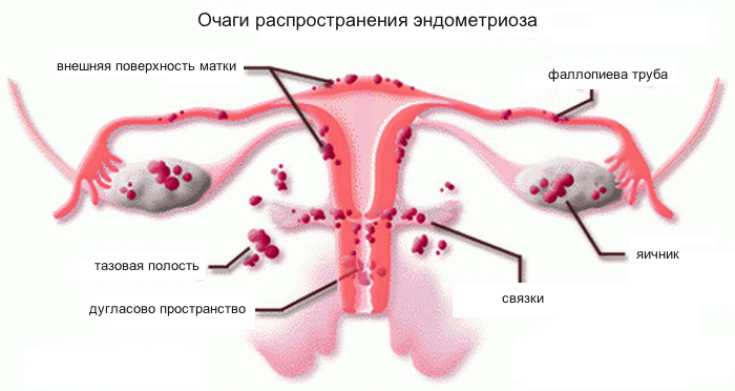Endometriosis is probably one of the most unpleasant gynecological diseases right after sexually transmitted infections. It is always accompanied by discomfort and can also cause infertility.
One of the most common complaints of patients with endometriosis is dyspareunia, or pain during intercourse. In order to eliminate or at least reduce these discomforts, first of all, it is necessary to treat the underlying disease.
However, there are enough methods that can also alleviate the discomfort symptomatically. Read more about the treatment of dyspareunia in endometriosis on estet-portal.com in this article.
- Dyspareunia in endometriosis: a problem that many girls are silent about
- How to reduce dyspareunia in endometriosis
- Drug treatment of dyspareunia in endometriosis
Dyspareunia in endometriosis: a problem that many girls are silent about
Dyspareunia in endometriosis can be manifested by pain of a completely different nature, duration and localization. If for someone sexual intercourse is accompanied by slight short-term discomfort, then for another woman any intimacy becomes hours of torture.
According to the latest data, the intensity and duration of pain during intercourse is not affected by the size of the focus of endometriosis, but by its location.
If the focus of endometriosis is located in the vagina or lower part of the uterus, then sexual intercourse is likely to be much more painful.
Read also: What methods will help to recognize endometriosis of the cervix
Since endometriosis is also accompanied by a hormonal imbalance, discomfort during intercourse may occur due to vaginal dryness caused by an imbalance of sex hormones.
How to reduce the symptoms of dyspareunia in endometriosis
The first step in dealing with dyspareunia is providing psychological support to the patient. Due to the constant appearance of discomfort during sex, a woman experiences tension, being in constant expectation of these unpleasant sensations. Thus, emotional stress further exacerbates the problem.

The second step is an experiment. The doctor may recommend that the woman try various positions that will minimize pain. For example, the missionary position among specialists is considered the most uncomfortable.
You can also determine the days of the cycle in which the pain will be minimal.
It is very important that the partner understands the cause of the woman's sexual discomfort and together with her looks for ways to solve this problem.
If it is not possible to eliminate the pain during intercourse, you should proceed to drug treatment.
Drug treatment of dyspareunia in endometriosis
If painful symptoms are mild and occur intermittently, non-steroidal anti-inflammatory drugs may be used to treat dyspareunia. However, these drugs only help to eliminate the symptoms. The most common treatment for endometriosis is hormone therapy.
For the latest articles, read Facebook!
The most popular are:
• oral contraceptives;
• intrauterine systems;
• gonadotropin-releasing hormone agonists.
However, the disadvantage of this type of treatment is that after stopping the use of drugs, endometriosis recurs and dyspareunia reappears.
Estrogen-lowering drugs are also being studied – aromatase inhibitors. There is evidence that they are effective in the treatment of dyspareunia in endometriosis.
Thus, in order to eliminate pain during sexual intercourse, it is necessary to take a comprehensive approach to solving the problem. By combining medical treatments with the use of lubricants, and other means that reduce vaginal dryness, it is possible to return the patient to a normal sexual life.
You may also be interested in: What is the danger of endometriosis







Add a comment